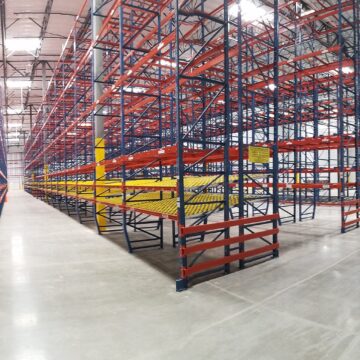5 Sustainability Trends in Real Estate for 2024
- Perspectives
As a trusted sustainability consultant for over 30 years, BranchPattern put together the following list of trends to pay attention to this year. Reach out if you want to discuss any in more detail or if you have more trends you want to add! Improvinglife@branchpattern.com.

1. Choosing Net Zero Carbon instead of Net Zero Energy Targets
Rather than setting zero energy targets, more clients are pursuing zero carbon targets. What does this mean? Goals related to zero energy are very specific about energy consumption. It’s a fairly simple equation and only considers energy consumption and production. On the other hand, zero carbon targets are considering emissions, which include the source of the energy (how clean is your grid?) and the emissions associated with building materials (embodied carbon). Net zero carbon targets are much more impactful because the team must consider demand peaks, grid efficiencies, and changes in design and construction practices. It’s a much more holistic way to measure sustainability at the building level.
How do you set targets for emissions though? The global consensus, commemorated by the Paris Agreement, is that we should establish reasonable emissions budgets for us to stay within. These budgets decrease each year, following limits set by climate models. Each country gets a slice of the global carbon pie, and they are tasked with the job of dividing that budget across the sectors of its economy. When it comes to buildings, Science Based Targets is an organization that is working to simplify the process of establishing targets for buildings that are aligned with the Paris Agreement. This methodology promises to help building owners understand the risk of emissions over the coming years, as our emissions piece of the pie gets smaller and smaller.
Validating zero carbon goals can be challenging. We recommend using a program like the International Living Futures Institute’s Zero Carbon certification. This particular certification considers actual energy consumption via utility bills, requires offsetting consumption with renewable energy generation, and requires a 20% reduction in embodied carbon emissions when compared to a baseline.

2. Using Innovative Materials to Reduce Embodied Carbon
Now that the project or portfolio has zero carbon targets, as discussed above, utilizing specific materials will help the team reach embodied carbon reduction goals. Make sure you’re completing these three steps before jumping to low-carbon material substitute:
Step 1: Consider reusing a building and/or building materials.
Step 2: Reduce material quantities.
Step 3: Design for disassembly and future reuse.
Once you’ve walked through those steps with your design team, now you’re ready to investigate innovative strategies for materials:
- Concrete with less Portland cement
- Mass Timber structural and enclosure systems
- Next-generation insulated wall panel systems
- Optimized foundation and slab design
Read more about reducing embodied carbon emissions HERE.

3. Implementing Electrification Strategies to Reduce Operational Carbon
Electrification of the existing building stock is a critical step toward decarbonizing the built environment, as well as electrifying all new construction projects. However, there are plenty of roadblocks when considering electrification, from strained electrical grids to the paradox of adding grid emissions while still aiming for overall decarbonization. When it comes to electrification, there are three main steps to consider:
Step 1: Assessment
Step 2: Load reduction (today)
Step 3: Implementation (tomorrow)
Read more about unraveling the complexities with electrification HERE.

4. Resurgence of Health and Wellness
The pandemic was a period of emergency attention to how building systems function to keep us safe. A flurry of research and investment in indoor air quality is beginning to work its way into standard practice for facility design and operation. Building owners are more savvy now about technology that really works, such as better HVAC filters and bringing in more outdoor air. Designers will also benefit from a new standard that ASHRAE recently issued on controlling infection risk. The additional awareness of and resources for good indoor air quality are normalizing a new and improved approach to HVAC.
With a little more air in the room, there’s been a return to broader aspects of health and wellness. Chief among those is the ‘S’ in ESG – the social dimensions of buildings such as equity, inclusive design, and community engagement.

5. Nature!
Fundamental shifts in the marketplace for buildings are being driven today by corporate action around sustainability. The EU has clear rules already implemented that require reporting of climate impacts, and the SEC is highly likely to (finally) issue their rules for climate disclosure in 2024. This is in sync with Trend #1 above, emissions reduction targets. In some meaningful ways, our recent progress in reducing building emissions is in fact a trickle-down effect of the larger corporate imperative for climate action. And it was a process – the rules for climate reporting first coalesced in 2015 around the work of the Task Force on Climate Related Financial Disclosures, or TCFD.
So, when the Taskforce on Nature-related Financial Disclosures, or TNFD released their inaugural standards for reporting nature impacts, it turned heads in the sustainability world. That’s because they are using the same playbook that TCFD did, working to create a standard for reporting the impact companies have on biodiversity, freshwater, land, and oceans. They are partnered with Science Based Targets Network to help organization measure and set goals for their impact on nature. This initiative is likely to gain rapid acceptance among building owners, corporations, and regulators, owing to its utilization of pre-existing climate change networks.




